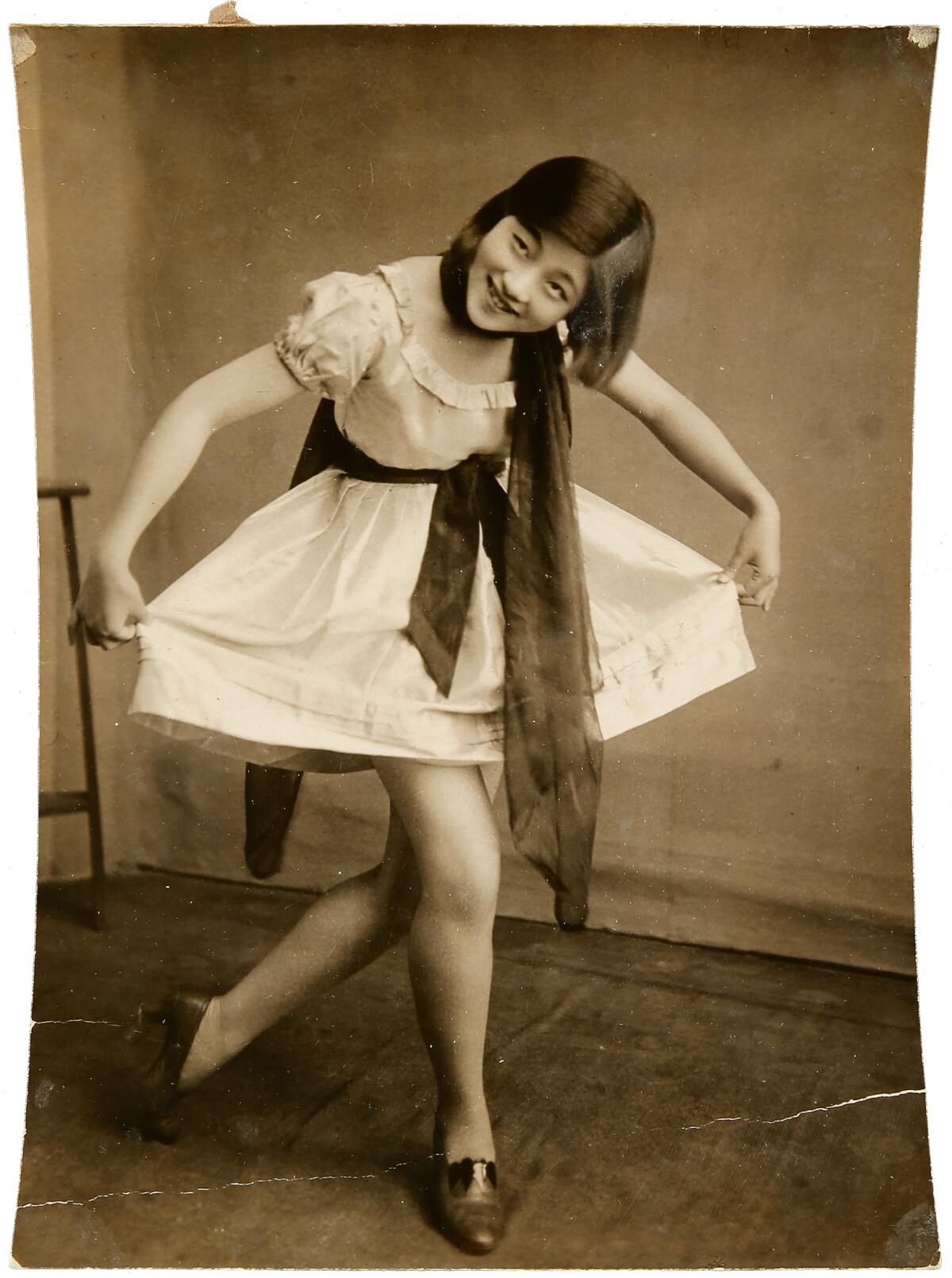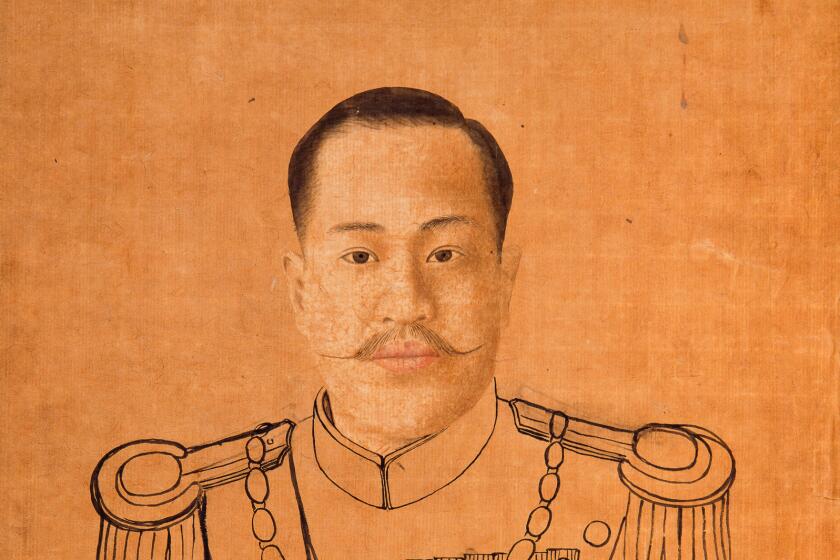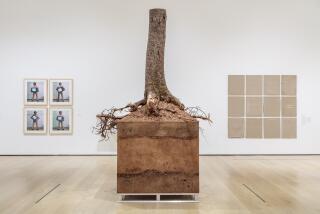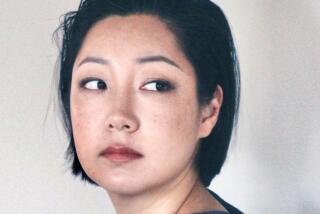How a photograph in LACMA’s new exhibition captures a pivotal moment in Korean history

The young woman in the sepia-toned photograph curtsies gracefully, inclining her head and smiling sweetly at the camera. She wears a light-colored dress with puffed sleeves and a flared skirt that falls above the knee. To a contemporary viewer, this picture may suggest girlish innocence. But when this photograph was taken in Korea in 1930, local viewers would likely have found it unsettling.
The photograph is one of over 130 artworks currently on view in “The Space Between: The Modern in Korean Art” at LACMA. Up through Feb. 19, the exhibition documents the development of modern art in Korea between 1897 and 1965. It was a tumultuous period that included the country’s colonization by Japan, the resulting influx of Western culture and technology, and the Korean War, which tore the nation in two.
Amid these dramatic transitions, the photograph represented a jarring modernity entering traditional Korean society. Here was a young woman with bobbed hair, wearing revealing Western clothing and posing coquettishly in a medium that had only been introduced to Korea in the late 1800s. Akin to her flapper counterparts in the West, she embodied a short-lived cultural moment known as Sinyeoseong, or “New Woman.” The photograph hangs in a small room devoted to this moment; like many of the works in the exhibition, it is being exhibited in the U.S. for the first time.
“The Space Between: The Modern in Korean Art” is the first major museum survey to examine art produced during a huge cultural transformation in Korea.
According to the exhibition’s curator, Dr. Virginia Moon, Sinyeoseong represented a “minor fluttering” of feminist sentiment that emerged in the 1910s. Unlike American movements advocating for the empowerment of women, Sinyeoseong was created and promoted largely by men. “It was the men who are thinking, ‘How can we utilize women in order to help modernize the country?’” says Moon. The movement had its limitations: In the early 20th century, Korean women were encouraged to pursue an education, but only so they could better raise and instruct their children. “It wasn’t this major movement that rocked everybody’s world,” says Moon. But it did create an opening for individual women who wanted to do something beyond being wives and mothers.
One of these women is the photo’s subject, Choi Seunghui. An artist who studied both Japanese modern and Korean Buddhist dance, she played a major role in the development of modern dance in Korea and was among the most famous and most photographed women of her day. This image, taken by the influential photographer Shin Nakkyun, may be one of the earliest depictions of Choi, capturing her on the verge of stardom.
Moon admits that not much is known about the photograph, why it was taken or where it may have been shown. The print was found by its current owner in a box in Shin’s apartment and was probably not widely circulated. She does know it was taken at a photo shoot where seven other photographers were present and suspects the gathering may have been an experimental learning session. Shin was the first photographer to establish photography schools in Korea and was known for his technical skills.
As for Choi Seunghui, she became an international star, living at various points in Korea, Japan and China. She founded her own dance institutes and revived forgotten Korean folk dances. At the height of her career, she toured internationally in Europe and the Americas. After World War II, she moved to what is now North Korea, where she influenced the development of Chinese and Chinese Korean dance. In the 1950s, she continued to perform in Eastern Bloc countries but was eventually purged from the North Korean Communist Party sometime in the late 1960s, after which little is known of her life.
Yet for the Choi in the photograph, none of this has happened yet. Stepping gingerly forward, she is both daring and demure, a “New Woman” caught in the minor fluttering of the camera’s mechanical eye.
'The Space Between: The Modern in Korean Art'
Where: Los Angeles County Museum of Art, 5905 Wilshire Blvd., Los Angeles
When: Mondays, Tuesdays and Thursdays 11 a.m.-6 p.m.; Fridays 11 a.m.-8 p.m.; Saturdays and Sundays 10 a.m. to 7 p.m. Closed Wednesdays. Through Feb. 19.
Info: (323) 857-6000, lacma.org
More to Read
The biggest entertainment stories
Get our big stories about Hollywood, film, television, music, arts, culture and more right in your inbox as soon as they publish.
You may occasionally receive promotional content from the Los Angeles Times.











